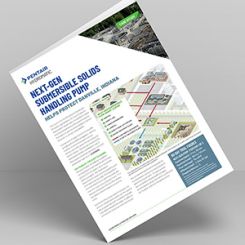Despite its name, pump specific speed (NS) does not have much to do with the actual speed of a pump. While the rpm is included in the formula, the calculation’s main purpose is to establish the impeller’s shape and contour and to link this to other pump parameters—such as head rise to shutoff or the maximum achievable theoretical efficiency. The values of specific speed can change drastically, depending on the point on the head-flow curve at which it is calculated. A video experiment illustrates how to conduct pump testing and how to produce a head-flow curve. Visit www.pumpingmachinery.com/pump_school/pump_school.htm, and view PVA #6. Note that this video does not address at which flow point (Q) a pump’s specific speed is calculated. In the PVA #6 video, one example illustrates how drastically the values of specific speed can change depending on which point on a head-flow curve it is calculated. The raw data were taken as discharge and suction pressures at several flow points, and the pump head was calculated from these data. For simplicity, the velocity head components and gauge elevation adjustments were not considered because the correction would be insignificant for this test.

 Figure 2. Head versus flow test data
Figure 2. Head versus flow test data Figure 3. Shape of the impeller profiles of different specific speeds
Figure 3. Shape of the impeller profiles of different specific speeds
